Singapore Botanic Gardens
The Singapore Botanic Gardens is a beautiful tropical botanic garden that displays the beauty and diversity of Singapore’s plant life. Established in 1859, it is a UNESCO World Heritage Site and holds significance as one of the oldest botanical gardens in the region. Covering more than 82 hectares, the gardens are home to many stunning orchids, tropical plants, and old trees, making it a favorite spot for both locals and visitors from around the world.
One of the main attractions in the gardens is the National Orchid Garden, which features over 1,000 different types of orchids and 2,000 unique hybrid varieties. This colorful and fragrant collection showcases Singapore’s reputation as the “Orchid Capital of the World.” The gardens also include different themed areas, like the Ginger Garden and the Rainforest, giving visitors a wonderful opportunity to experience nature up close.
The Singapore Botanic Gardens is not just a place to see beautiful plants; it also hosts cultural events and educational programs. These activities help people understand why protecting the environment and plants is important for our world. Whether you want to take a peaceful walk, enjoy a picnic, or learn more about gardening, the gardens offer a relaxing break from the busy city life.
Table of Contents
Where is the Singapore Botanic Gardens located?
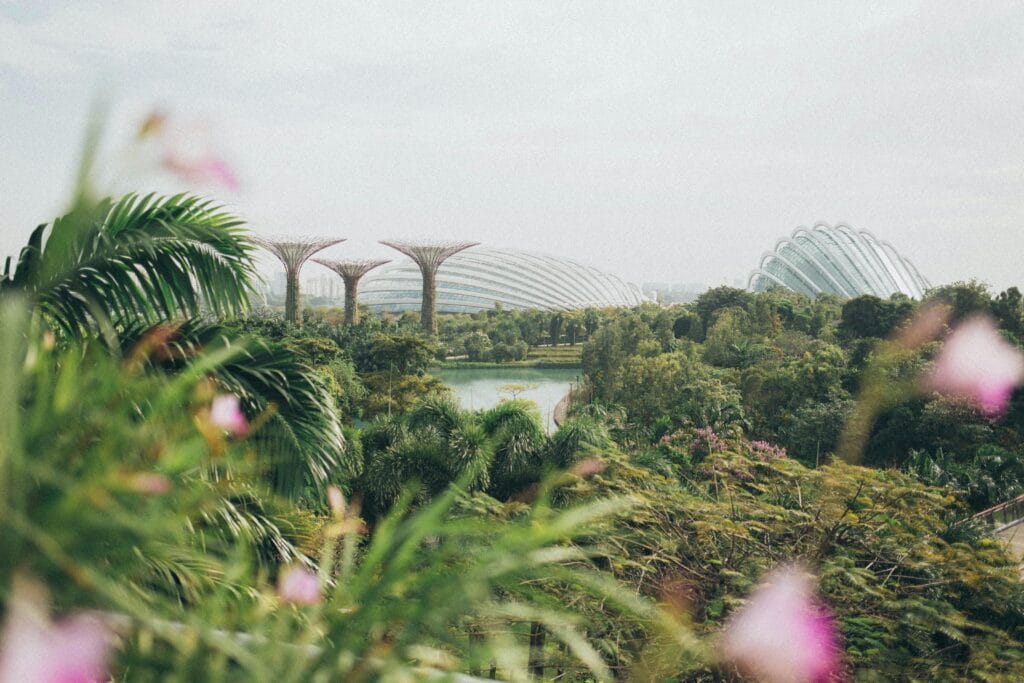
The Singapore Botanic Gardens is located right in the center of Singapore. It showcases how a traditional British tropical garden has transformed into a modern scientific institution. Today, it plays an important role in protecting plant species and educating visitors about nature.
Inscription of Singapore Botanic Garden
The Singapore Botanic Gardens, often simply called The Gardens, became a UNESCO World Heritage Site on July 4, 2015. This recognition happened during an important meeting in Bonn, Germany, where countries come together to discuss heritage sites around the world. The Gardens have achieved an impressive honor by becoming the only tropical botanic garden on UNESCO’s World Heritage List. That is a significant milestone for Asia and makes it the third botanic garden in the world to receive this recognition, following the Orto Botanico di Padova in Italy and the Royal Botanic Gardens in Kew, England.
What is the history of the Singapore Botanic Garden?
The idea of a national garden in Singapore began in 1822 when Sir Stamford Raffles, who loved nature, started the ‘Botanical and Experimental Garden’ at Fort Canning. Later, in 1859, the Singapore Botanic Gardens was officially established. That large garden covers 49 hectares, and an additional area surrounding it spans 137 hectares, making it a beautiful green space for everyone to enjoy.
Originally, this place began as a simple garden dedicated to studying plants. Over time, it has grown into a modern botanical garden, a research center, and an important site for conservation efforts. One of its significant contributions was helping to establish rubber plantations in Southeast Asia, a legacy that continues to make an impact today.
In 1874, the British colonial government managed the Gardens, and they brought in a team of botanists trained at Kew Gardens to help guide their development. Over the years, the Gardens became a major center for science, research, and the conservation of plants in Southeast Asia. One of their key focuses has been growing rubber plantations, which are very important in the region.
What are the famous places in Singapore Botanic Gardens?
The Singapore Botanic Gardens is a special place that is acknowledged as a UNESCO World Heritage Site. It has many well-known areas that visitors can explore, including towering Heritage Trees, a lush Rainforest, the beautiful National Orchid Garden, the fragrant Ginger Garden, the charming Bandstand, Swan Lake, Seed Bank and Sculptures. Each of these spots has something unique to offer, making the gardens a delightful experience for everyone who visits.
Heritage Trees
Heritage Trees is home to 44 remarkable trees that are important parts of Singapore’s natural beauty. These tall, mature trees have grown gracefully over many years, and some have even stood for centuries. They play a key role in making the city feel unique and give a sense of history and connection to nature in the Tropical Garden City.
The Rainforest
The rainforest is home to many different types of plants, including important trees like rattans, fruit trees, and the tall Jelutong tree. In Singapore, more than half of the plant species found in the rainforest are rare, which makes this area a vital part of the country’s natural heritage. In a valuable six-hectare area of untouched tropical forest, around 314 different types of plants grow alongside one another, forming a rich and diverse ecosystem.
This forest features various layers, including low-growing herbs, ferns, climbing plants, shrubs, and towering trees. Some trees can reach up to 50 meters and have been around since modern Singapore was founded in 1819.
National Orchid Garden
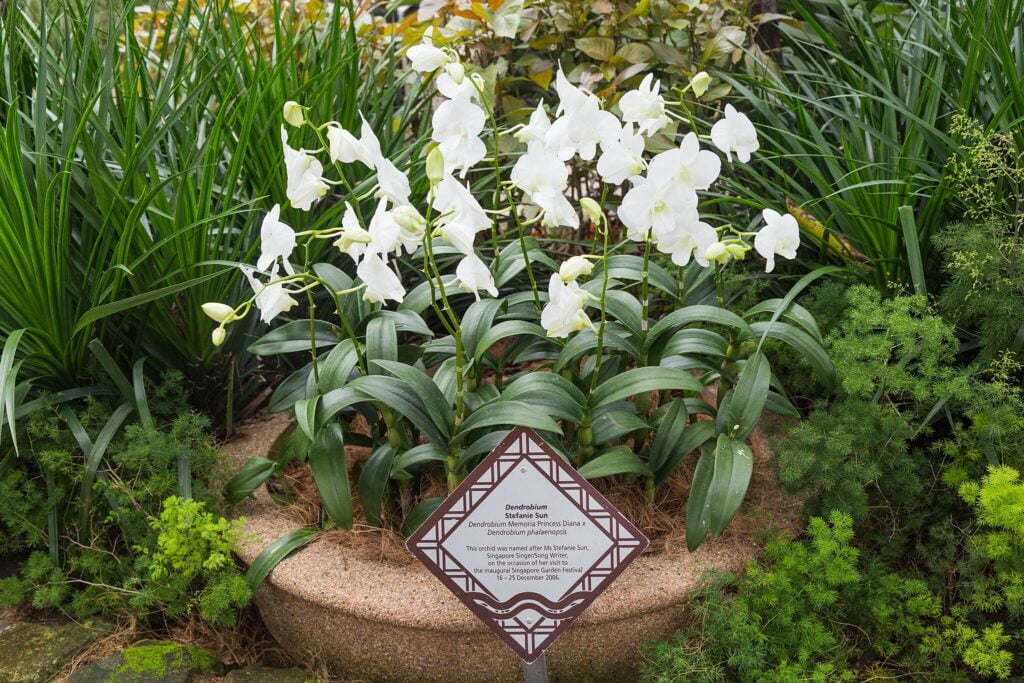
The National Orchid Garden is home to more than 1,000 different types of orchids and around 2,000 hybrid varieties, making it a breathtaking place to visit. The gardens started their orchid breeding efforts and created new hybrid orchids in 1928. The beauty of these flowers is simply amazing and definitely worth seeing! Orchids have been strongly connected with the Gardens since 1859.
In 1928, they started a program to breed orchids, and since then, they have created some beautiful varieties that deserve to be shown off. The gardening team carefully arranged the orchids to showcase the best features of each variety.
Recent advancements in laboratory techniques have made it easier to grow and study plants. These innovations have also played a vital role in Singapore’s Garden City initiative, helping to introduce a wide variety of important and beautiful plants to the area.
Ginger Garden
The Ginger Garden spans one hectare and is home to more than 250 different kinds of ginger plants. It has been segmented into themed sections based on the geographical areas to which the gingers are native. The garden showcases numerous varieties of ginger and other plants from similar botanical families. It’s a beautiful place to explore the diversity of these fascinating plants! Visitors can wander through this beautiful garden and see a variety of gingers, each with unique leaf shapes and stunning flowers. It’s a fantastic place to appreciate the diversity of these fascinating plants!
Bandstand
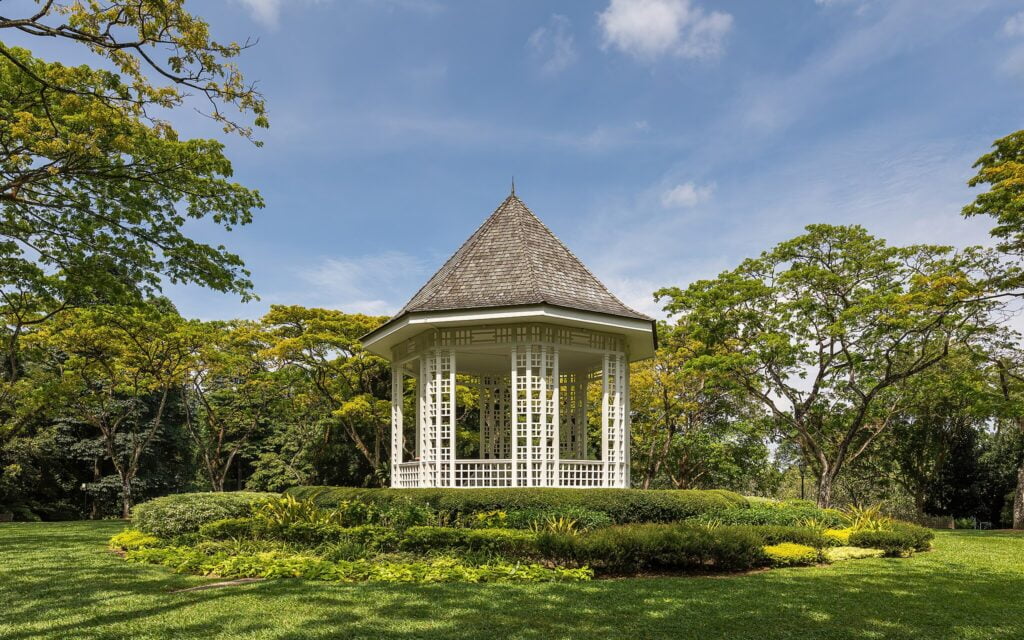
The Bandstand is a charming octagonal gazebo constructed in 1930 and has kept its original look over the years. At first, it was on a small hill, the highest point in the Tanglin Core area, standing 33 meters above sea level. In the 1860s, workers leveled the hill to create a special spot for military bands to perform. This lovely area was surrounded by beautiful flower beds and palm trees, making it a pleasant place for music and gatherings.
Although the iconic landmark at The Gardens isn’t used for music performances anymore, it still attracts many couples who want to take wedding photos. Surrounding the Bandstand, you’ll find a beautiful circle of Yellow Rain Trees(Samanea saman). The trees were specifically planted to enhance the area and create a lovely experience for visitors.
Eco-Garden and Eco-Lake
The Eco-Garden is a special garden that showcases plants that have played a notable role in history. The name ‘eco’ highlights both the environmental benefits of these plants and their importance in trade and economy. It’s a place where you can learn about how certain plants have shaped lives over time, both for nature and for livelihoods.
Many types of plants—like trees, bushes, and smaller plants—offer a wide range of valuable resources across large areas of land. These resources include things like spices for cooking, colorful dyes, sticky substances known as resins, strong fibers, tasty fruits, and wood for building and making furniture.
A beautiful family of black swans from Western Australia can be seen around the peaceful Eco-Lake, along with many important plants and animals. With its stunning scenery and calm, natural atmosphere, it’s a great place to unwind after a long day.
Swan Lake
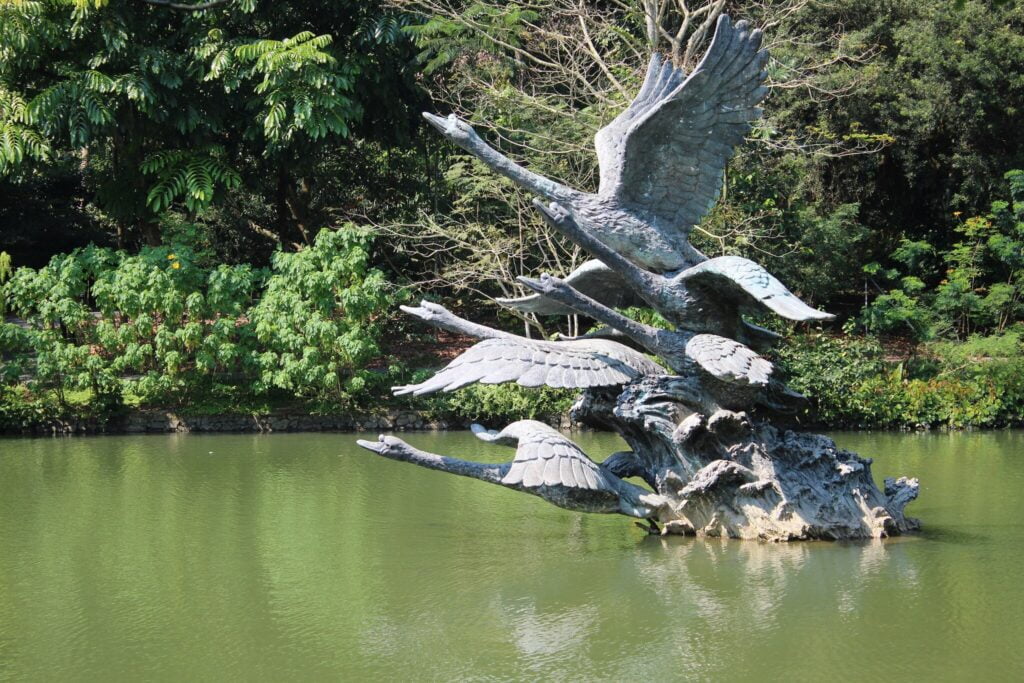
Swan Lake is located in the beautiful Singapore Botanic Gardens. It was created in 1866, shortly after the Gardens were established. This lovely lake is known as the oldest decorative lake in Singapore. Covering an area of just under 1.5 hectares and with a depth of about 4 meters, Swan Lake is home to various plants and fish. It gets its name from a charming pair of mute swans from Amsterdam that gracefully swim across the water, adding to the lake’s beauty.
The island in the lake is famous for its many Nibong palms, a type of palm tree that was reportedly planted there back in 1891. Swan Lake is also an important water source, helping nourish the plants in the nearby Gardens around the Tanglin Core.
Seed Bank
The Singapore Botanic Gardens Seed Bank, which opened on July 13, 2019, is a special place located in the Singapore Botanic Gardens. Its main goal is to protect different plant species from Southeast Asia by storing their seeds. This facility not only focuses on keeping these plants safe but also conducts research and provides education about how to preserve natural plant life.
Sculptures
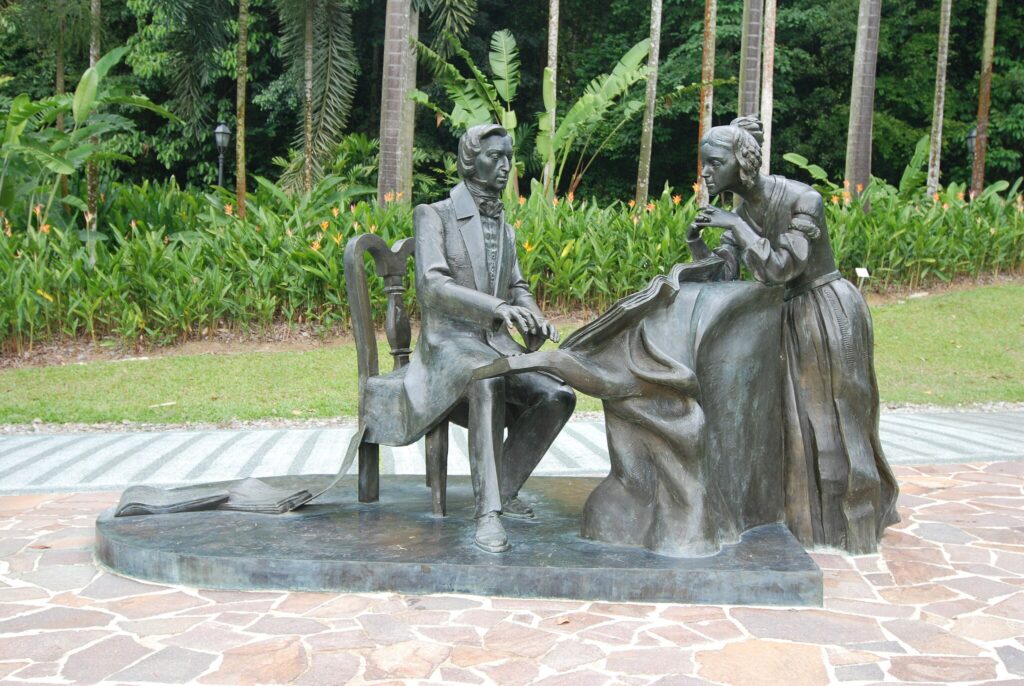
The Singapore Botanic Gardens are filled with beautiful sculptures made from different materials by both local artists and creators from around the world. These artworks transform the gardens into a lively open-air gallery. Many people, groups, businesses, and even countries have generously donated and worked together, playing a significant role in the wonderful history of the Gardens.
What is the Singapore Botanic Gardens famous for?
The Singapore Botanic Gardens is well-known for its amazing variety of tropical plants. One of its highlights is the National Orchid Garden, which features more than 1,000 different types of orchids and 2,000 unique hybrids. This beautiful place is recognized as a UNESCO World Heritage Site, meaning it’s celebrated for its lovely scenery and important history. It’s a popular spot for both local residents and visitors, providing a calm and peaceful escape right in the city.
Why do we need to preserve Singapore Botanic Gardens significantly for us and our future generations?
Preserving the Singapore Botanic Gardens safe and well-maintained is very important for a few reasons. First, it provides a vital green area in the city, helping to support a variety of plants and animals. This variety of life is important for helping our environment stay balanced and healthy. Secondly, the Gardens are really important for education and research. That provides valuable information about plants and how to protect our environment, which will help future generations.
Finally, it offers fun and healing benefits for the community, helping people feel better mentally and connect with nature. By protecting this important site, we make sure that both present and future generations can enjoy its beauty, learn from what it offers, and understand why taking care of our natural spaces is important.
Why should you visit the Singapore Botanic Gardens as a visitor?
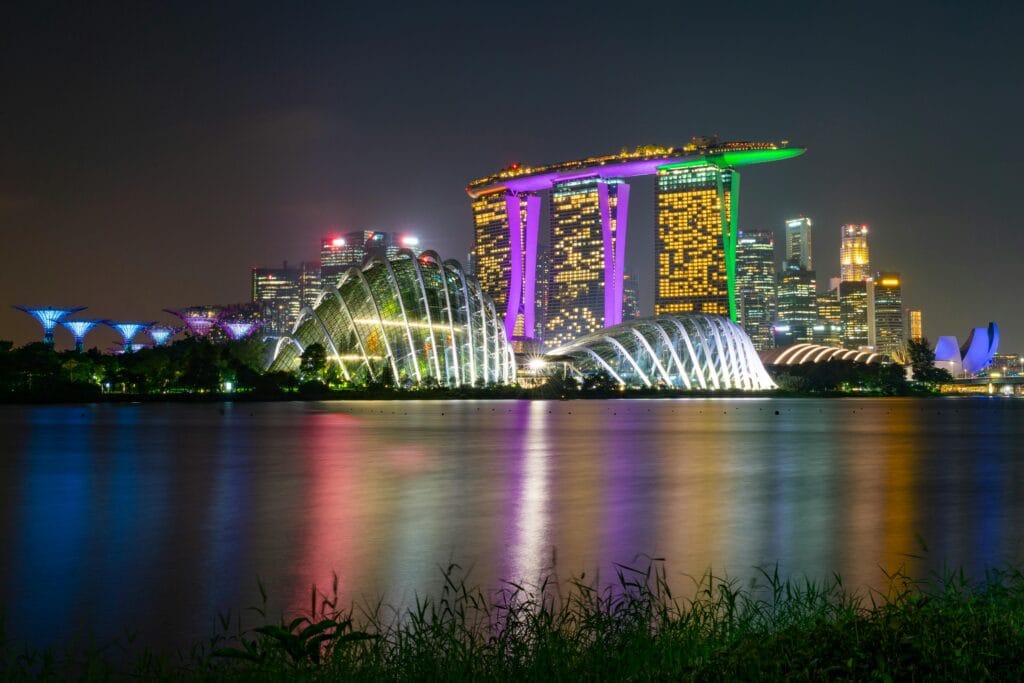
The Singapore Botanic Gardens is a brilliant place to visit for many reasons. First, it’s recognized by UNESCO, which means it’s very special and has beautiful scenery and a variety of plants. One of the highlights is the National Orchid Garden, where you can see thousands of different types of orchids—quite a sight to behold! The gardens also provide peaceful walking paths, lovely lakes, and perfect spots for picnicking and enjoying nature.
The gardens also hold a range of cultural events and educational programs, making them a lively place for both locals and visitors. Whether you love nature, enjoy taking photos, or just want a peaceful spot to relax, the Botanic Gardens offer a lovely escape from the hustle and bustle of the city.
Are you ready to immerse yourself in nature and relaxation at the Singapore Botanic Gardens?
Experience the stunning Singapore Botanic Gardens! Make plans to visit and take in the beauty of a wide variety of plants while enjoying a peaceful getaway right in the city. Whether you love nature or just want a beautiful place to relax, the gardens promise a memorable experience. Bring your friends or family along and create wonderful memories surrounded by lush greenery and colorful flowers!
When you’re planning your adventure, enhance your travel experience by using trusted websites like GetYourGuide, Trip.com, Agoda, Expedia and Hotels.com! These platforms offer a variety of enjoyable tours, activities, and accommodation options to suit every traveler’s needs.
- GetYourGuide offers a wide variety of unforgettable travel experiences. You can choose from tickets to Popular Attractions, Transportation Options, City Passes, Guided Tours, Hop-on Hop-off Bus Services, Water Activities, Day trips, and Trips that last several days in many locations around the world.
- Trip.com makes it easy to combine Flights and Hotels, Trains, Car Rentals, Airport Transfers and Attractions & Tours to create the perfect travel package tailored just for you.
- Agoda offers a wide range of accommodations and travel options to suit your needs. With user-friendly search features, you can easily find the perfect Hotel, Apartment, or Villa, Flights, Activities and Airport Transfer at competitive prices.
- Expedia to find the perfect travel deals and begin planning your next adventure with ease. Your unforgettable trip is just a click away!
- Hotels.com today to explore incredible deals and find the perfect housing for your dream trip! Your adventure starts here!
Start your journey with our reliable travel partners and unlock the best of Singapore Botanic Gardens and beyond!
Disclaimer
In this post, affiliate links are included and those links are associated with well-known travel companies such as GetYourGuide, Trip.com, Agoda, Expedia and Hotels.com. If you choose to purchase or book a service using those links, we may earn a commission at no additional cost to you. We focus on recommending products and services that are helpful to you and we appreciate your support!
Conclusion
We hope you find this information helpful for your next trip. If you want to learn more, check out our other travel blog posts. We cover many topics, including amazing places to visit and helpful travel tips. Whether you’re looking for hidden gems, new cultures, or helpful advice, there’s something for everyone.
Additionally, if you enjoyed the information we shared, don’t forget to explore our other travel product reviews to make your journey even better! Please take a moment to look through our previous posts and let your sense of adventure guide you on your next journey! We wish you happy travels and look forward to sharing more with you in our next blog post!




